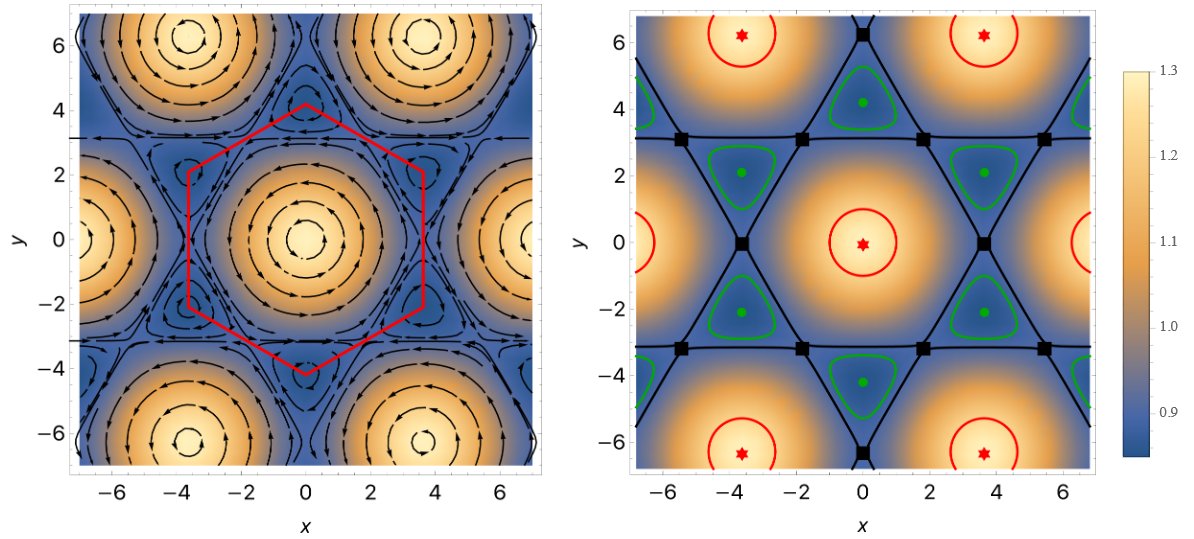
See the paper here: Few Body Systems, arxiv.org/abs/2407.03212
Center for Ultracold Atoms and Quantum Gases, IExP and IQOQI, Innsbruck
Category for scientific news related to the theory group.

See the paper here: Few Body Systems, arxiv.org/abs/2407.03212
 If you have been searching for a high-level overview of the dipolar supersolid phase, look no further than this open access article by Prof. Francesca Ferlaino and Dr. Manfred Mark! Newly published in the journal “Physik in unserer Zeit”, this German language primer lays out the historical background, newly discovered properties and open questions which remain about this paradoxical quantum phase. See the full article below:
If you have been searching for a high-level overview of the dipolar supersolid phase, look no further than this open access article by Prof. Francesca Ferlaino and Dr. Manfred Mark! Newly published in the journal “Physik in unserer Zeit”, this German language primer lays out the historical background, newly discovered properties and open questions which remain about this paradoxical quantum phase. See the full article below:
Ferlaino, F. and Mark, M.J. (2024), Der Suprafestkörper. Phys. Unserer Zeit. https://doi.org/10.1002/piuz.202301692
With colleagues from LNGS and Gran Sasso Science Institute (L’Aquila, Italy), we show that rotating dipolar quantum gases in the supersolid phase can serve as a versatile analogues of neutron stars effectively emulating their behaviour during a glitch, an occasional abrupt speed up of a highly magnetic neutron star’s rotation frequency, followed by a slow relaxation. In rotating neutron stars, glitches are believed to occur when many superfluid vortices unpin from the interior, transferring angular momentum to the stellar surface. In the supersolid analogy, we show that a glitch happens when vortices pinned in the low-density inter-droplet region abruptly unpin. We show that dipolar supersolids offer an unprecedented possibility to test both the vortex and crystal dynamics during glitches events and they provide a tool to study glitches originating from different radial depths of a neutron star. Benchmarking our theory against neutron star observations, these results will open a new avenue for the quantum simulation of stellar objects from Earth.
See the paper here: Phys. Rev. Lett., arXiv:2306.09698
In collaboration with colleagues from Otago, we investigate the excitation spectrum and compressibility of a dipolar Bose-Einstein condensate in an infinite tube potential in the parameter regime where the transition between superfluid and supersolid phases occurs. Our study focuses on the density range in which crystalline order develops continuously across the transition. Above the transition the superfluid shows a single gapless excitation band, phononic at small momenta and with a roton at a finite momentum. Below the transition, two gapless excitations branches (three at the transition point) emerge in the supersolid. We examine the two gapless excitation bands and their associated speeds of sound in the supersolid phase. Our results show that the speeds of sound and the compressibility are discontinuous at the transition, indicating a second-order phase transition. These results provide valuable insights into the identification of supersolid phenomena in dipolar quantum gases and the relationship to supersolidity in spin-orbit coupled gases.
See the paper here: Phys. Rev. Research 5, 033161 (2023)
Following our recent experimental observation of vortices in Bose-Einstein condensates comprised of atoms with inherent long-range dipole-dipole interactions [Nat. Phys. 18, 1453-1458 (2022)], we thoroughly investigate vortex properties in the three-dimensional dominantly dipolar regime, where beyond-mean-field effects are crucial for stability, and investigate the interplay between trap geometry and magnetic field tilt angle. Last year, Jean Dalibard was awarded with the most prestigious French prize for physicists, the CNRS Gold medal, and this work is our contribution to a Special Issue honouring his many contributions to the field of ultracold atoms, and in particular his work on quantum vortices. See the full collection here: CNRS Gold Medal Jean Dalibard (academie-sciences.fr).
See the pre-print here: arXiv:2303.13263, and the now published paper here: C. R. Phys.
By rapidly rotating the dipole moment in an ultracold Bose gas it is possible to tune the dipole-dipole interaction. Rotating dipoles around the origin of the x-y plane, for example, gives a time averaged interaction that is equivalent to anti-dipoles oriented along the z axis! This means that the effective interaction is opposite: head-to-tail anti-dipoles repel, and side-by-side anti-dipoles attract! In an infinite tube of anti-dipoles, this means that the possible supersolid states have cylindrical symmetry around the x-y axis, which we utilize to facilitate analytic predictions, and faster numerical simulations, of two-component antidipolar supersolids!
See the pre-print here: arXiv:2301.08007